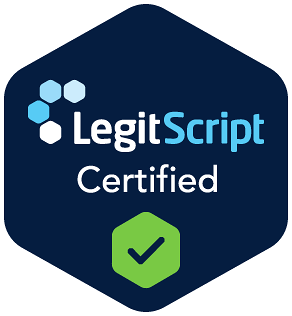Embarking on the path to recovery from substance abuse is a courageous journey that requires more than just willpower; it demands a practical toolkit of effective strategies. Cravings, triggers, and difficult emotions are inevitable parts of this process, but they don't have to lead to relapse. The key is developing robust coping skills for substance abuse—proactive techniques that empower you to navigate challenges, manage stress, and build a resilient foundation for long-term sobriety.
This guide moves beyond generic advice to provide a comprehensive roundup of eight evidence-based skills. Each one is a powerful tool you can learn, practice, and integrate into your daily life. We will explore specific, actionable methods designed to address the complex realities of recovery.
From regulating your nervous system during a moment of crisis to fundamentally rewiring negative thought patterns, these skills will equip you to not just survive recovery, but to thrive within it. Let's explore the essential techniques that can transform your approach to healing and help you reclaim control over your future. This list is your blueprint for building that essential toolkit.
1. Mindfulness-Based Relapse Prevention (MBRP)
Mindfulness-Based Relapse Prevention (MBRP) is a powerful coping skill for substance abuse that merges traditional cognitive-behavioral relapse prevention strategies with mindfulness meditation. Developed by pioneers like Dr. Sarah Bowen and Dr. G. Alan Marlatt, this approach doesn't aim to eliminate cravings or triggers. Instead, it teaches you to observe these experiences with non-judgmental awareness, giving you the power to respond thoughtfully rather than reacting impulsively.
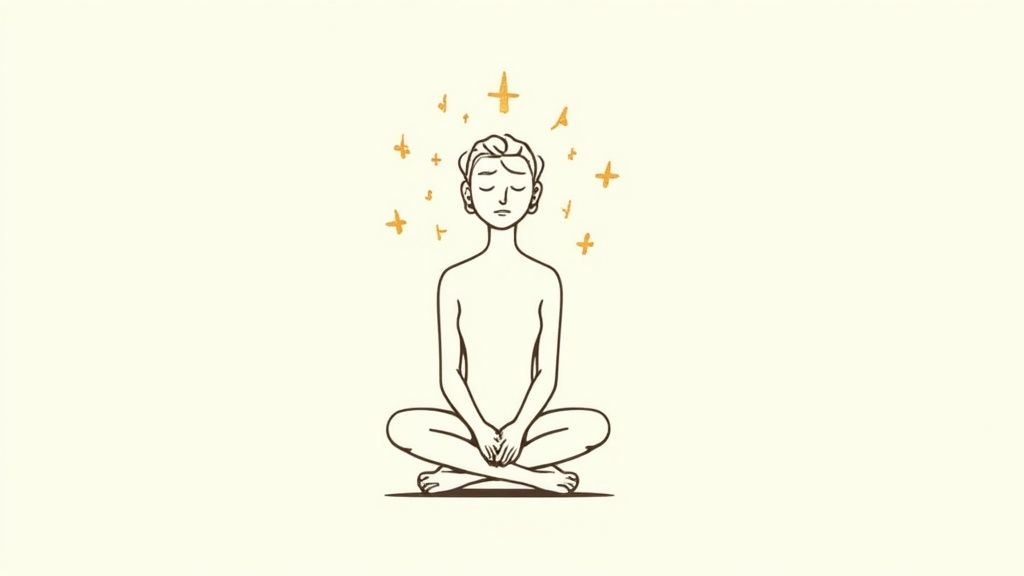
This method helps you recognize the early warning signs of a potential relapse, such as automatic negative thoughts or intense physical cravings. By practicing mindfulness, you create a crucial pause between the trigger and your response, allowing you to choose a healthier action.
How MBRP Works in Practice
MBRP is often delivered in structured group sessions over several weeks, but its core principles can be applied daily. For example, Veterans Affairs hospitals have successfully implemented MBRP programs to help veterans manage alcohol addiction by teaching them to sit with discomfort instead of immediately turning to substance use. Similarly, outpatient clinics use these techniques to support individuals in opioid recovery, helping them navigate the intense emotional and physical challenges.
Key Insight: The goal of MBRP isn't to empty your mind or stop cravings from happening. It's about changing your relationship with them, viewing them as temporary events that you can observe without being controlled by them.
Actionable Steps to Get Started
You can begin integrating MBRP into your recovery plan with a few simple steps. These practices are designed to build awareness and resilience over time.
- Start Small: Begin with 5-10 minute guided meditation sessions daily. Apps like Calm or Headspace offer excellent introductory programs.
- Mindful Moments: Practice bringing non-judgmental awareness to routine activities. Notice the sensations of warm water while washing dishes or the taste and texture of your food during a meal.
- Find Support: Joining a local or online meditation group can provide community and encouragement, which are vital components of long-term recovery.
2. Cognitive Behavioral Therapy (CBT) Techniques
Cognitive Behavioral Therapy (CBT) is a foundational coping skill for substance abuse that provides a structured, goal-oriented approach to recovery. Pioneered by Dr. Aaron Beck, CBT operates on the principle that our thoughts, feelings, and behaviors are interconnected. It teaches you to identify, challenge, and reframe the destructive thought patterns and beliefs that fuel substance use, empowering you to develop healthier responses to life's challenges.
This method directly addresses the cognitive distortions that lead to relapse, such as "I can't handle this without a drink" or "One use won't hurt." By learning to recognize these automatic thoughts, you can interrupt the cycle and choose a different, more constructive behavior. CBT is particularly effective because it equips you with practical, lifelong tools for managing triggers.
How CBT Works in Practice
CBT is a cornerstone of many successful addiction treatment programs due to its evidence-based and highly practical nature. For instance, SMART Recovery programs across the country utilize CBT-based tools to help people gain independence from addictive behaviors. The Matrix Model, an intensive outpatient program for stimulant addiction, heavily incorporates CBT to help individuals restructure their lifestyles. It is also often a key component in integrated care for co-occurring disorders, which you can learn more about in trauma-informed therapy approaches.
Key Insight: CBT isn't about ignoring negative thoughts; it's about becoming a detective of your own mind. You learn to question the validity of your thoughts and gather evidence for or against them, ultimately weakening their power over your actions.
Actionable Steps to Get Started
You can begin applying CBT principles to your recovery journey immediately with these practical strategies. Consistency is key to making these techniques a natural part of your coping toolkit.
- Keep a Thought Record: Use a notebook to log situations that trigger cravings. Write down the situation, your automatic thought, your feelings, and then practice creating a more balanced, alternative response.
- Practice the STOP Technique: When a trigger hits, Stop what you're doing, Take a breath, Observe your thoughts and feelings without judgment, and then Proceed mindfully with a healthier choice.
- Test Your Beliefs: Use behavioral experiments to challenge negative predictions. If you think you can't socialize without alcohol, test that belief by attending a short social event sober and observing the actual outcome.
3. The HALT Method (Hungry, Angry, Lonely, Tired)
The HALT method is a simple yet profoundly effective self-assessment tool used in recovery. It’s an acronym for Hungry, Angry, Lonely, and Tired, representing four common physical and emotional states that can trigger cravings and lead to relapse. This coping skill for substance abuse empowers you to pause and check in with your basic needs, addressing vulnerabilities before they escalate.
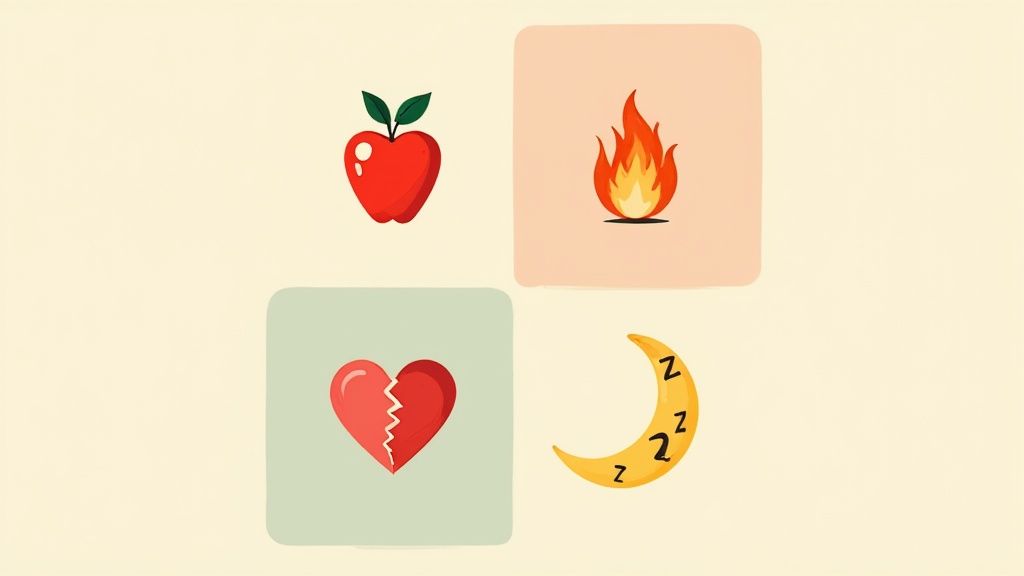
Popularized by 12-step programs like Alcoholics Anonymous, this technique teaches individuals to recognize that what feels like an overwhelming urge to use substances may actually be a signal of an unmet fundamental need. By proactively managing these states, you can significantly reduce your susceptibility to triggers.
How HALT Works in Practice
The HALT method is a cornerstone of daily routines in many recovery settings. Rehabilitation centers often integrate HALT check-ins into their morning and evening group sessions, helping clients build the habit of self-awareness. In another example, sponsors in Narcotics Anonymous frequently teach the HALT acronym to sponsees as a first line of defense, encouraging them to call before acting on an impulse and walk through each letter of the acronym together.
Key Insight: HALT serves as an internal barometer. It reminds you that feeling overwhelmed doesn't always signal a need for substances; often, it signals a need for a sandwich, a conversation, a nap, or a moment to breathe.
Actionable Steps to Get Started
Integrating the HALT method into your daily life is straightforward and can create an immediate buffer against relapse. These proactive steps help you stay ahead of potential triggers.
- Set Reminders: Use your phone to set alarms three or four times a day to pause and ask yourself: Am I hungry, angry, lonely, or tired?
- Prepare for Hunger: Keep healthy, easy-to-access snacks in your car, bag, or at your desk to quickly address hunger before it becomes a trigger.
- Create a Connection List: Develop a short list of supportive people you can call or text when you feel lonely. Having it ready makes reaching out much easier.
- Prioritize Sleep: Establish a consistent sleep schedule and create a relaxing bedtime routine to ensure you are not navigating recovery while exhausted.
4. Progressive Muscle Relaxation (PMR)
Progressive Muscle Relaxation (PMR) is a systematic coping skill for substance abuse that teaches you to release physical tension. Developed by Dr. Edmund Jacobson, this technique involves intentionally tensing specific muscle groups and then releasing them, which helps you achieve a deep state of both physical and mental calm. It directly counters the anxiety and stress that often trigger cravings or intensify withdrawal symptoms.
This method provides a tangible, physical way to manage emotional distress. By learning to recognize the difference between a tensed and a relaxed state, you gain greater control over your body's stress response, providing a powerful, healthy alternative to using substances for relief.
How PMR Works in Practice
PMR is widely used in various recovery settings due to its simplicity and effectiveness. For instance, detox facilities often teach PMR to patients to help them manage the intense physical discomfort and restlessness associated with withdrawal. In correctional facilities, PMR is integrated into substance abuse programs to give inmates a constructive tool for managing anger and stress without resorting to old behaviors. Outpatient programs frequently assign PMR as a homework exercise, empowering clients to build a self-soothing routine they can use anytime.
Key Insight: PMR isn't just about relaxing your muscles; it's about training your mind to recognize and release stress held within the body, breaking the physical cycle of tension that can lead to a relapse.
Actionable Steps to Get Started
You can easily incorporate PMR into your daily routine to build resilience against stress and cravings. These steps will help you learn the technique effectively.
- Use Guided Audio: Start with guided PMR recordings, which are widely available on YouTube or through mental health apps. A narrator will walk you through each muscle group, making the process simple to follow.
- Focus on Contrast: Pay close attention to the distinct feeling of tension as you squeeze a muscle group, and then the deep sense of release as you let it go. This contrast is the key to the technique's effectiveness.
- Create a Routine: Practice at the same time and in the same quiet location each day to build a consistent habit. Many find it helpful before bed to improve sleep quality.
5. Grounding Techniques (5-4-3-2-1 Method)
Grounding techniques, particularly the 5-4-3-2-1 method, are powerful sensory-based coping skills for substance abuse that anchor you in the present moment. Popularized by trauma-informed therapy and Dialectical Behavior Therapy (DBT), this strategy is designed to interrupt overwhelming cravings, anxiety, or flashbacks. It works by shifting your focus away from distressing internal states and onto your immediate physical surroundings, effectively pulling you out of a negative thought spiral.
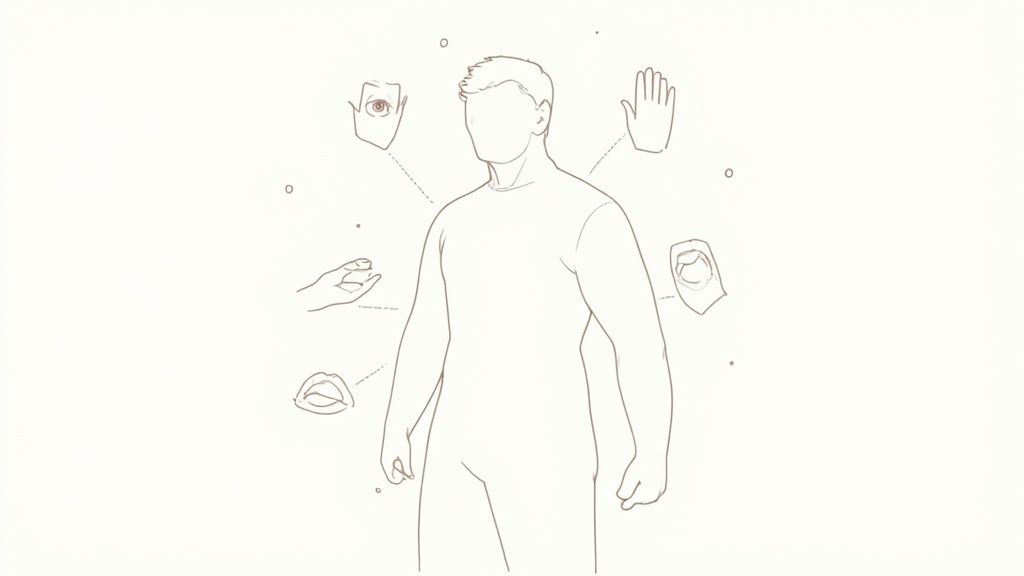
The method systematically engages all five senses, forcing your brain to process external stimuli rather than being consumed by the craving or panic. This re-engagement with reality provides a critical pause, giving you the space to regain control and choose a healthier response instead of an impulsive one.
How Grounding Works in Practice
The 5-4-3-2-1 method is incredibly versatile and is used in various clinical and crisis settings. Emergency rooms often teach this technique to overdose survivors to help them manage post-crisis anxiety and prevent immediate relapse. Similarly, crisis intervention teams equip clients with this tool to de-escalate intense emotional states in real-time. Therapists also integrate it into trauma therapies like EMDR to help clients stay present when processing difficult memories that could otherwise trigger substance use.
Key Insight: Grounding isn't about ignoring or suppressing your feelings. It's about providing a temporary, healthy distraction that proves you can withstand intense distress without resorting to substance use, building self-efficacy over time.
Actionable Steps to Get Started
You can practice this technique anywhere, at any time, making it one of the most accessible coping skills for substance abuse. The process is simple and easy to remember.
- Practice When Calm: First, learn the technique when you are not in distress. This builds muscle memory, making it easier to recall and use effectively during a crisis.
- Engage Your Senses: Calmly identify: 5 things you can see, 4 things you can feel or touch, 3 things you can hear, 2 things you can smell, and 1 thing you can taste.
- Combine with Breathing: Enhance the effect by taking slow, deep breaths as you move through each sense. This helps regulate your nervous system and promotes a state of calm.
- Carry Sensory Aids: Keep a small, textured object like a stress ball or a smooth stone in your pocket. This gives you an immediate item to use for the "touch" component when you need it most.
6. Social Support Network Building
Social Support Network Building is a foundational coping skill for substance abuse that involves deliberately cultivating healthy, supportive relationships. Recovery is not a journey meant to be walked alone; this strategy focuses on creating a web of encouragement and accountability with family, friends, peers, and professionals who champion your sobriety goals. It’s about both mending connections damaged by addiction and forging new ones with people who understand and support recovery.
This approach provides a critical buffer against the isolation that often fuels substance use. When you face triggers or difficult emotions, a strong support system offers a healthy outlet and reminds you that you're not alone. This network becomes your first line of defense, offering guidance and a sense of belonging that replaces the role substances once played.
How Social Support Works in Practice
Building a support network is an active, ongoing process with proven benefits. For example, the sponsorship model in Alcoholics Anonymous (AA) and Narcotics Anonymous (NA) provides direct one-on-one guidance from someone with long-term sobriety. Similarly, organizations like SMART Recovery and online communities such as Sober Grid offer peer-led meetings where individuals share experiences and practical coping strategies in a safe, non-judgmental environment.
Key Insight: A strong social support network does more than just offer encouragement. It creates a new social identity centered on recovery, making sober living feel normal, rewarding, and sustainable.
Actionable Steps to Get Started
You can begin strengthening your support system immediately. These steps are designed to build reliable connections that will sustain you through the challenges of recovery.
- Start Small: Focus on one or two trustworthy people initially. This could be a supportive family member, a close friend, or a therapist.
- Join a Group: Regularly attend a support group meeting, whether in-person or online. The shared experience builds powerful bonds and reduces feelings of isolation. Understanding the differences between these settings can be helpful; you can explore group therapy vs. individual therapy to see what fits best.
- Be a Giver and Receiver: Practice being a supportive friend to others in recovery. Offering help strengthens your own commitment and reinforces positive social behaviors.
7. Healthy Lifestyle and Routine Development
Establishing a healthy lifestyle and a structured daily routine is one of the most foundational coping skills for substance abuse. This approach replaces the chaos and time consumed by addiction with predictability, purpose, and wellness. By incorporating physical exercise, proper nutrition, and adequate sleep, you create a stable framework that supports both physical and mental recovery, addressing the whole person rather than just the substance use itself.
This method works by restoring the body's natural rhythms, which are often disrupted by substance misuse. A predictable schedule reduces decision fatigue and anxiety, freeing up mental energy to focus on recovery goals. It provides a healthy, tangible way to fill the void left by substance use, building self-esteem and a new sense of identity.
How Healthy Routines Work in Practice
The power of routine is a cornerstone of many successful recovery models. For instance, therapeutic communities and recovery residences often implement highly structured daily schedules with designated times for chores, group therapy, and meals. Similarly, organizations like Phoenix Multisport have built a nationwide sober fitness community, demonstrating how physical activity can become a central, positive force in a person's new life. This structure is also a key component of many treatment programs, and understanding how does rehab work often reveals the emphasis placed on building these daily habits.
Key Insight: Recovery isn't just about stopping a negative behavior; it's about actively building a new, positive life. A healthy routine is the architectural plan for that new life, giving you a clear path forward each day.
Actionable Steps to Get Started
You can begin building a healthier routine immediately with small, consistent actions. The goal is progress, not perfection.
- Start Small: Instead of a complete overhaul, add one healthy habit at a time. This could be a 15-minute walk after dinner or waking up at the same time every day.
- Plan Your Days: Use a daily planner or a simple app to schedule your time. Block out periods for meals, exercise, work, and relaxation to create a predictable flow.
- Meal Prep for Success: Prepare healthy meals and snacks on the weekend. This removes the guesswork during busy weekdays and makes it easier to fuel your body properly.
- Find Joy in Movement: Choose physical activities you genuinely enjoy, whether it's hiking, dancing, or team sports. This makes exercise a rewarding part of your routine rather than a chore.
8. Distress Tolerance Skills (TIPP Technique)
Distress Tolerance Skills, particularly the TIPP technique from Dialectical Behavior Therapy (DBT), are crisis survival strategies designed to rapidly de-escalate overwhelming emotions. Developed by Dr. Marsha Linehan, this approach provides a powerful set of coping skills for substance abuse by helping you navigate intense distress without resorting to harmful behaviors like substance use. TIPP is an acronym for Temperature, Intense exercise, Paced breathing, and Paired muscle relaxation.
These skills work by activating the body's parasympathetic nervous system, which helps calm the "fight or flight" response that often fuels cravings and impulsive decisions. Instead of being carried away by a wave of emotion, TIPP gives you concrete, physiological tools to ground yourself in the present moment and survive the crisis until the intensity subsides.
How TIPP Works in Practice
The TIPP technique is widely used in various clinical settings due to its immediate effectiveness. Residential treatment facilities teach TIPP to help clients manage acute cravings, while outpatient addiction counselors incorporate it into therapy sessions to equip individuals with practical, real-time crisis management tools. It's a go-to method for anyone needing to quickly reduce emotional arousal before they can engage in other problem-solving strategies. These skills are crucial for managing the intense discomfort that often distinguishes physical vs. psychological dependence.
Key Insight: TIPP isn't about solving the underlying problem causing the distress. It is a first-aid skill designed to get you through the immediate crisis so you can think more clearly and avoid making a situation worse.
The following infographic illustrates the core sequence of the TIPP technique, offering a clear, step-by-step process to manage overwhelming emotional crises effectively.

This visual guide highlights the rapid, sequential nature of TIPP skills, showing how to leverage physiological responses to regain emotional control quickly.
Actionable Steps to Get Started
You can prepare to use the TIPP technique by having a plan in place before a crisis hits. This proactive approach makes the skills more accessible when you need them most.
- Prepare for Temperature: Keep a cold pack in the freezer or identify a sink where you can splash cold water on your face. The goal is a quick, safe temperature shock.
- Plan for Intense Exercise: Identify a safe space where you can do 20-30 seconds of intense activity, like jumping jacks, running in place, or sprinting up a flight of stairs.
- Practice Paced Breathing: Regularly practice slowing your breathing down when you are calm. Inhale for a count of four and exhale for a count of six to activate your body's relaxation response.
8 Key Coping Skills Comparison
| Method | Implementation Complexity (🔄) | Resource Requirements (⚡) | Expected Outcomes (📊) | Ideal Use Cases (💡) | Key Advantages (⭐) |
|---|---|---|---|---|---|
| Mindfulness-Based Relapse Prevention (MBRP) | Moderate – requires trained facilitator and consistent practice 🔄 | Moderate – initial guided training plus self-practice ⚡ | Significant reduction in cravings and relapse risk (37% relapse reduction) 📊 | Long-term relapse prevention, emotional regulation, stress management 💡 | Evidence-based, develops sustained coping skills, improves emotional regulation ⭐ |
| Cognitive Behavioral Therapy (CBT) Techniques | Moderate – structured sessions, active participation 🔄 | Moderate – therapist guidance plus homework ⚡ | 60-70% participants improve in reducing substance use 📊 | Short to medium term therapy focused on thought and behavior change 💡 | Highly validated, practical tools, skill transfer to varied situations ⭐ |
| The HALT Method (Hungry, Angry, Lonely, Tired) | Low – simple self-assessment, easy to learn 🔄 | Low – no special equipment, self-applied ⚡ | Prevents triggers by managing basic emotional/physical needs 📊 | Quick daily self-checks to prevent relapse, broadly applicable 💡 | Very simple, promotes self-awareness, easy to implement ⭐ |
| Progressive Muscle Relaxation (PMR) | Low to Moderate – requires quiet time and guided practice 🔄 | Low – no equipment needed, time for sessions ⚡ | Reduces anxiety and physical tension, improves sleep 📊 | Managing withdrawal symptoms, stress relief, anxiety reduction 💡 | Immediate physical relief, easy to learn, enhances sleep quality ⭐ |
| Grounding Techniques (5-4-3-2-1) | Low – simple sensory method, easy to teach 🔄 | Low – no equipment, can be done anytime ⚡ | Immediate relief from anxiety and cravings, improves presence 📊 | Panic attacks, overwhelming cravings, trauma-triggered distress 💡 | Immediate effect, accessible anywhere, engages mindfulness ⭐ |
| Social Support Network Building | Moderate – requires social interaction and effort 🔄 | Moderate – time investment, potential therapy sessions ⚡ | Increases long-term sobriety likelihood 3-5x 📊 | Recovery maintenance, combating isolation, accountability 💡 | Diverse support sources, increases motivation, builds community ⭐ |
| Healthy Lifestyle and Routine Development | Moderate to High – significant lifestyle changes 🔄 | Moderate to High – time, possibly financial costs ⚡ | Reduces relapse risk by 40%, improves mood akin to medication 📊 | Holistic recovery, physical and mental wellness maintenance 💡 | Addresses multiple wellness areas, builds structure, improves self-esteem ⭐ |
| Distress Tolerance Skills (TIPP Technique) | Low to Moderate – simple but requires prep for crisis use 🔄 | Low to Moderate – items like ice cubes, space for exercise ⚡ | Rapid 25-50% reduction in emotional intensity 📊 | Crisis moments, emotional dysregulation, preventing impulsive use 💡 | Fast-acting, scientifically grounded, multiple technique options ⭐ |
Integrating Your Skills for Real Healing and Real Freedom
Navigating the path of recovery requires more than just willpower; it demands a well-rounded and practiced set of tools. Throughout this guide, we've explored a powerful arsenal of eight evidence-based coping skills for substance abuse, moving from the mindful awareness of MBRP to the immediate crisis management of the TIPP technique. Each strategy offers a unique way to manage triggers, regulate emotions, and build a resilient foundation for lasting sobriety.
The journey isn't about perfectly executing a single technique every time. Instead, it’s about building a versatile toolkit and developing the wisdom to know which tool to reach for in a given moment. Some days, a simple HALT check-in before a meal will be enough to diffuse a craving. On more challenging days, you might need to combine a CBT thought-challenging exercise with a grounding technique to regain your sense of stability.
Building Your Personal Recovery Blueprint
Think of these skills as interconnected components of a larger system designed to support your well-being.
- Mind-Body Connection: Techniques like Progressive Muscle Relaxation and the 5-4-3-2-1 method are not just for acute stress. Practicing them regularly strengthens the connection between your mind and body, making you more attuned to the early physical warning signs of a trigger or emotional distress.
- Proactive vs. Reactive Strategies: Building a social support network and establishing a healthy routine are proactive defenses. They create an environment where triggers are less likely to arise. In contrast, Distress Tolerance Skills and the HALT method are powerful reactive tools, designed for immediate use when a craving or crisis hits. A robust recovery plan includes a healthy balance of both.
- Consistency Over Intensity: The real power of these coping skills for substance abuse is unlocked through consistent practice. Integrating a five-minute mindfulness session into your morning or scheduling a weekly call with a supportive friend builds "muscle memory" for your recovery. When a high-risk situation occurs, your response will feel more automatic and less overwhelming.
From Coping to Thriving
Mastering these strategies is the bridge between simply abstaining from substances and truly thriving in a life of freedom. It's about reclaiming your power, understanding that you have effective, healthy, and accessible alternatives to turn to in times of need. The goal is to move beyond a state of constant vigilance and into a life where you feel confident, capable, and in control of your choices. This is where real, sustainable healing begins.
Recovery is a dynamic and personal process. Your coping mechanisms should be just as adaptable and tailored to your unique needs. By embracing these skills, you are not just fighting addiction; you are actively building a more fulfilling, present, and empowered life, one intentional choice at a time.
Ready to put these skills into practice with professional guidance? The experienced team at Altura Recovery specializes in teaching and reinforcing these exact coping skills for substance abuse within a structured, compassionate outpatient setting. Visit Altura Recovery to learn how our tailored programs can help you build a personalized toolkit for lasting freedom.

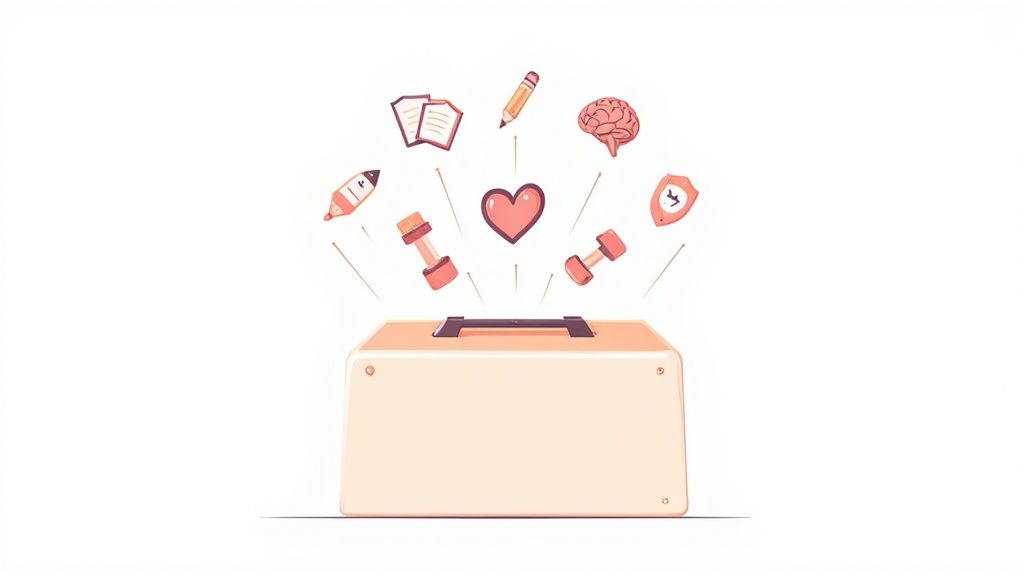
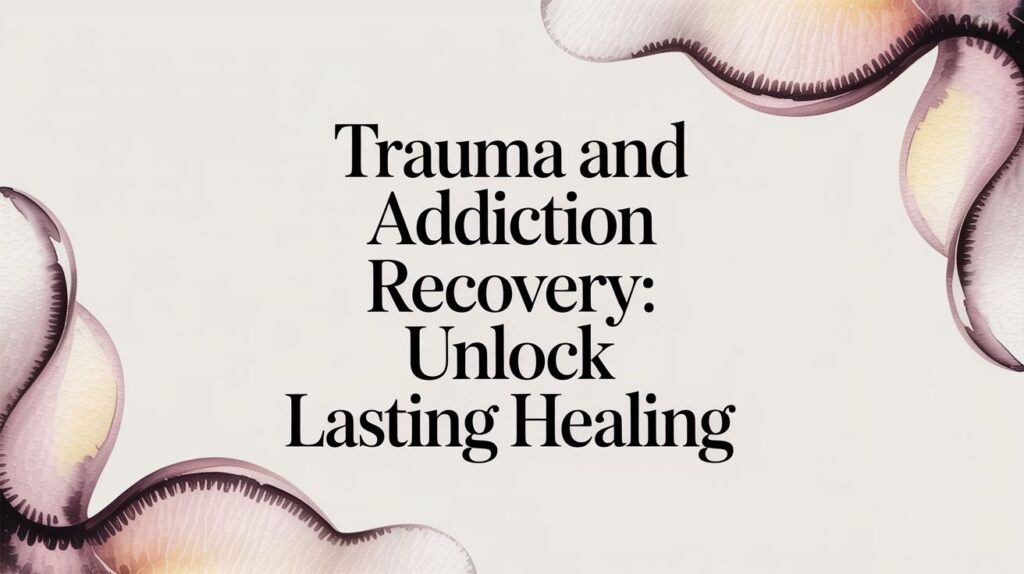

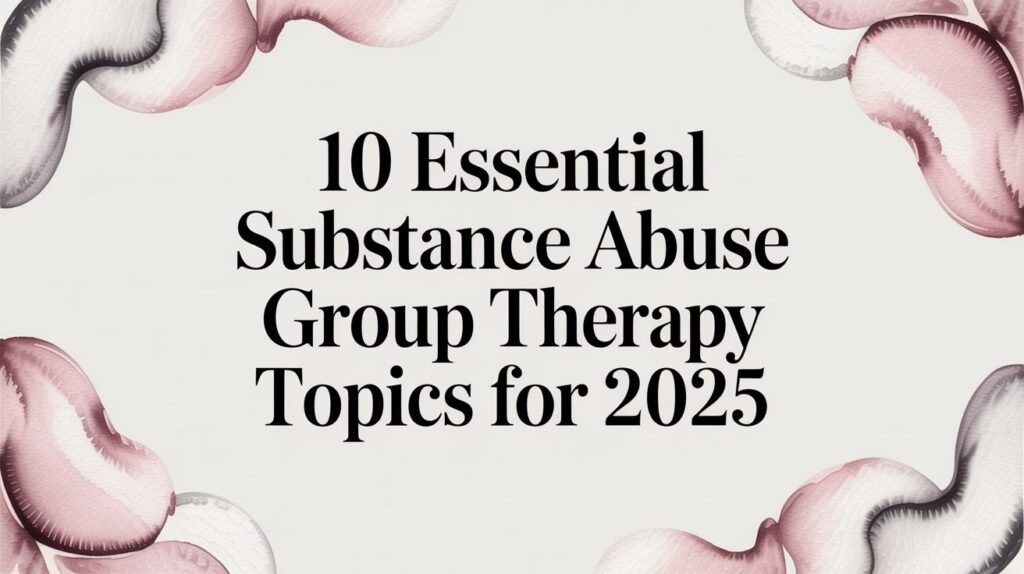
![Top 12 Dual Diagnosis Treatment Centers Texas [2025 Guide]](https://alturarecovery.com/wp-content/uploads/2025/11/thumbnail-21-1024x574.jpg)


